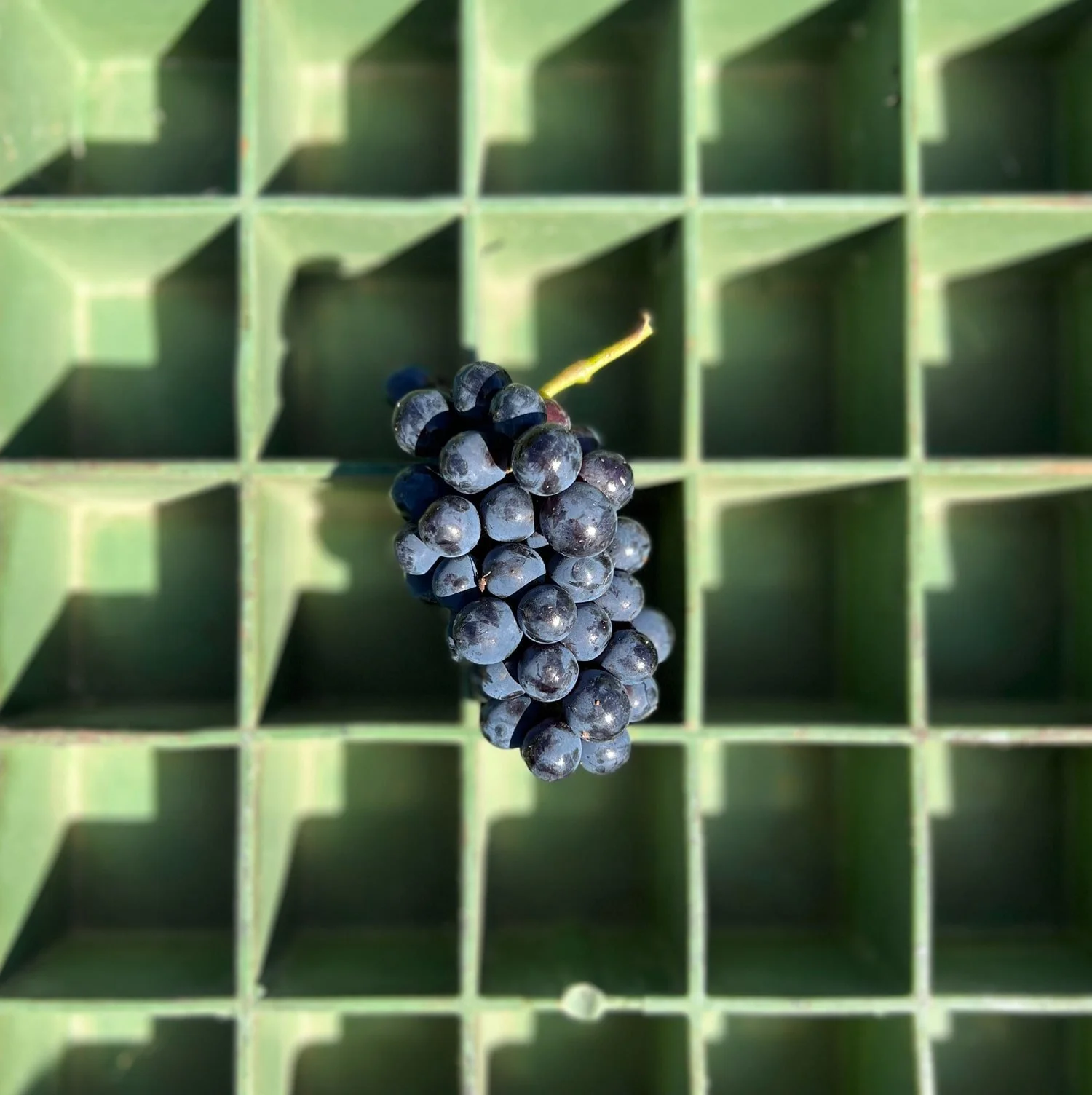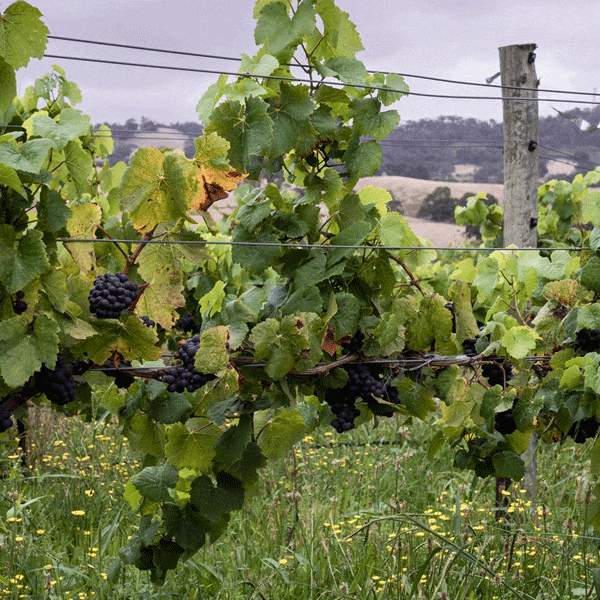Vintage Report 2024: Challenges and Triumphs
Despite confronting adverse weather and an early harvest, the vineyard experienced pockets of ideal conditions, hinting at an exceptional vintage.
Early but high-quality harvest due to favourable growing periods
Persistent southerly winds ensured a colder and drier season
Frequent frosts were experienced, 15 in total
Organic practices ensured resilience against mildew risks
Successfully avoided pollination issues, which affected many in the Hills
The subtle arrival of budburst on September 7th marked the beginning of a new season. Unpredictable winds and frost tested the vines early on, but frost sprinklers defended them through 15 chilly nights. Despite these efforts, a harsh frost on October 22nd left a portion of our chardonnay vines barren come harvest time.
November and December brought further challenges in the form of unexpected thunderstorms from tropical northwestern Australia. Yet, the organically grown grapes weathered the storm with minimal damage. Thanks to the replenishing rains and meticulous vineyard care, the vines thrived, some even flourishing without irrigation until February.
January and February brought relief with cool, clear skies, ideal for vine growth. The chardonnay’s hen and chicken bunches filling out to be almost full sized berries.
Harvest, commenced on February 14th, with each grape hand-picked with care. The pinot noir, picked early for sparkling wine, set the stage. Some of the chardonnay, destined for a Mornington Peninsula winery, followed suit. Pinot noir for table wine, sauvignon blanc, and cabernet sauvignon — all joined the early parade this year.
As the bustling days of harvest came to a close, focus shifted to installing new boundary fencing. Anticipation grew for the arrival of a flock of ewe lambs, ready to graze and rejuvenate the vineyard through the winter.
Block 4 Pinot Noir A 2024 Varietal snapshot
Chardonnay
Budburst occurred around September 7th. A severe frost on October 22nd damaged 0.5 ha of chardonnay in full flower, resulting in no fruit at harvest. Despite this, conditions in January and February allowed the vines to prosper, and the chardonnay for sparkling wine was picked early.
Pinot Gris
The pinot gris was picked five days later than in 2023. Despite cold, windy weather during flowering affecting yields for the whites, the pinot gris yield was 7.6 tonnes, well above the expected 4 tonnes.
Sauvignon Blanc
Budburst for the sauvignon blanc was about ten days later than the pinot noir and chardonnay. Older sauvignon blanc vines were not irrigated until February due to good subsoil moisture levels. A well-established block of 25-year-old sauvignon blanc was dry-grown and produced a lush canopy. The sauvignon blanc harvest was unusually early by a full month this year.
Pinot Noir
Budburst for the pinot noir also occured around September 7th. Severe frost on October 22nd damaged some chardonnay, but the pinot noir vines were unaffected. The early pick for young pinot noir vines for sparkling wine started on February 14th, two weeks earlier than previous years, with the table wine picked on February 24th and 25th, significantly earlier than the previous year. Yields exceeded expectations with 28 tonnes, six above the prediction.
Cabernet Sauvignon
The cabernet sauvignon was harvested eight days earlier than usual this year, benefiting from the favorable conditions earlier in the season.


